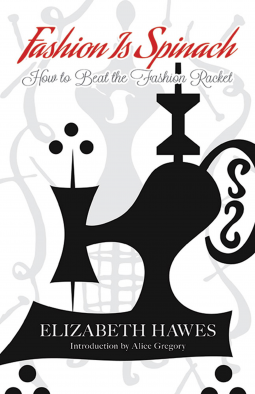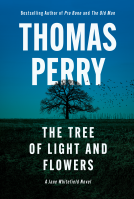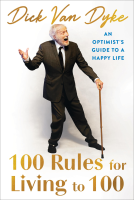
Fashion Is Spinach
How to Beat the Fashion Racket
by Elizabeth Hawes
This title was previously available on NetGalley and is now archived.
Send NetGalley books directly to your Kindle or Kindle app
1
To read on a Kindle or Kindle app, please add kindle@netgalley.com as an approved email address to receive files in your Amazon account. Click here for step-by-step instructions.
2
Also find your Kindle email address within your Amazon account, and enter it here.
Pub Date Jun 17 2015 | Archive Date Nov 03 2015
Description
"I don't know when the word fashion came into being, but it was an evil day," Hawes declares. Style, she maintains, reflects an era's mood, altering only with changes in attitude and taste. Fashion, conversely, exists only to perpetuate sales. Hawes denounces the industry's predatory practices, advising readers to reject ever-changing fads in favor of comfortable, durable, flattering attire. Decades ahead of her time, she offers a fascinating and tartly observed behind-the-scenes look at the fashion industry's economics, culture, and ethics.
Available Editions
| EDITION | Paperback |
| ISBN | 9780486797311 |
| PRICE | $12.95 (USD) |
Average rating from 9 members
Featured Reviews
 Janet P, Reviewer
Janet P, Reviewer
I'm of two minds about this book. On the one hand Hawes was a significant, but not well-known today, figure in the development of American fashion. She's a delightful writer and her adventures make for fun reading.
On the other hand the world has changed so much in the nearly 80 years since she wrote this book, and not just the prices. Consider two important factors. At this time no French design house made anything but custom clothing. Now they all make ready-to-wear clothes. At the time there really wasn't such a thing as an "American designer," now they are some of the best known names in fashion.
These changes along with many others have made her fashion world alien to us. But even though the procedures and people have changed, she still has lots to teach us.
Hawes' analysis of the fashion world of her time is deep and learned from experience, but it doesn't really fit with our world of clothing. The world has changed in every way.
Back then comfortable "work" clothes were not worn by the well-to-do. Today everyone wears them.
Back then those who could afford to had clothes custom-made for them. Today even finding someone to shorten a dress can be hard.
Back then there wasn't a market for mid-range clothes. Today even famous designers make clothes sold in department stores.
Even though the world has changed in particulars, the truth of Hawes message is clear. She saw and told us that fashion was designed to make us buy the newest thing, to create change for the sake of change.
While this fuels the industry, does it serve us well? Hawes would say no. The customers who have her respect are those who know what looks good on them, have it properly tailored and then wear it, not necessarily adopting the current fashion.
To do that required guts and lots of money back in the 30's. To do that today still requires guts.
And guts are something Elizabeth Hawes had plenty of.
This book is such a delight to read. Written 80 years ago by a remarkable women in the fashion industry her wit, principals and bravado apply even today. She was brilliant and light years ahead of her time. She encourages women to dress for ourselves and our comfort not for fads. Based on the fashions of the 1920s to 1930s this is a riveting view of fashion at that time.
 Kathleen C, Reviewer
Kathleen C, Reviewer
"What I’m Reading Now: Elizabeth Hawes’s Fashion Is Spinach"
At my house, fashion means black slacks with no cat hair on them. I am elated if an outfit can double for a bicycle trip and shopping at the supermarket.
Not being fashionable, I was surprised to fall in love with Fashion Is Spinach (1938), a witty, addictive book by Elizabeth Hawes, a twentieth-century fashion sketcher, reporter, critic for The New Yorker, and designer of her own line of clothing. Part autobiography, part critique and history of the fashion industry in the 1920s and ’30s, this engrossing book makes me think of the humor writing of Cornelia Otis Skinner crossed with the radical criticism of Mary McCarthy. It has recently been reissued by Dover. Her eight other books are out of print.
Hawes writes dramatically, “I, Elizabeth Hawes, have sold, stolen, and designed clothes in Paris.”
Born in Ridgewood, New Jersey, in 1903 , she always loved sewing. As a child she made hats for her Kewpie dolls and designed and sewed her own dresses. By the age of 12, she was selling children’s dresses to a store in Pennsylvania. She gave this up in high school because she wanted more social life, but continued to make her own clothes.
"I used Vogue and Harper’s Bazaar freely, copying sketches or changing them. This further enforced the French legend on my mind. All beautiful clothes were designed in France and all women, including myself, wanted them."
She is thankful that she “escaped going to art school” and went to Vassar, which was a family tradition. At first she had no direction. She was bored by English and history.
"My first year at Vassar was marked by nothing much in particular. My sister was a senior and had a good many men for weekends. I tried to fall in with the same plan. It worked with fair success until the end of that year when I lost the beau I had kept hanging over from high school. He went to Williams and, after having me to one house party, outgrew me. I was quite unattractive and as I became progressively more serious-minded during the next three years, I had fewer boyfriends."
Having fewer boyfriends was a good thing at Vassar. Hawes became enraptured by economics, including Labor Problems and Socialism. She was entranced by the economic theory of Labour Party co-founder Ramsay MacDonald, and wrote her thesis on it. Outside classes, she continued to make clothes.
After graduation, she went to Paris on a shoestring. A couple of poorly-paid freelance fashion reporting jobs paid the rent for a small room with a basin. (She had to give up baths.) She knew hardly any French, and it took months to pick up.
But it didn’t prevent her working, and in Paris she learned the difference between style and design.
She tells us bluntly that there are two types of women: “One buys her clothes made-to-order, the other buys her clothes ready-made.”
The former are lucky, the ones who had a real style and clothing created by French designers. The rest of us must wear whatever Macy’s decides to sell.
Hawes writes:
"Fashion is that horrid little man with an evil eye who tells you that your last winter’s coat may be in perfect physical condition, but you can’t wear it. You can’t wear it because it has a belt and this year “we are not showing belts.”
"Fashion gets up those perfectly ghastly ideas, such as accessories should match, and proceeds to give you shoes, gloves, bag, and hat all in the same hideous shade of kelly green which he insists is chic this season whether it turns you yellow or not."
Paris fashion for Hawes in the ’20s was a crazy wild rush of making up fashion news (there were only two big shows a year by designers), and working at copy houses that tried to get illicit previews of designers like Chanel. Hawes got a job as a sketcher at a copy house, a dressmaking shop “where one buys copies of the dresses put out by the important retail designers. The exactitude of the copy varies with the price… ” (Generally they were about half the price.) She was sent to fashion shows to “copy” the clothing in sketches (which she had to do hastily afterwards from her notes on programs, and sometimes her programs were seized by the attendants. The copy house also paid American manufacturer buyers to let them see the latest clothing before it was sent by a fast ship to the U.S. One of their regulars was Madame Ellis.
Madame Ellis did not want to be seen at the copy house. She insisted that someone be sent to her.
Hawes writes,
"I had a very large beaver coat. A fur coat in Paris is quite a rarity among the working class. Mine turned out to have a special value. I was requested to don it one day in November and go to the resident buying office through which Madame Ellis worked. It was toward the end of the mid-season buying, the day before a large boat was to sail."
Madame Ellis opened the boxes of Chanel dresses, told her to put them under her coat, “and get them back here as fast as you can.”
This is an absolutely compelling read. I love Hawes’s stories and her radical take on fashion. Ready-made clothes should be made for real women, who should be asked what they want. I couldn’t agree more.
Eventually she is disgusted by the theft of designs and finds work as a designer. And then she goes home to the U.S. to design and sew.
I long for her silk lounging pajamas (pictured at the Metropolitan Museum of Art website).
By the way, Hawes was blacklisted during the McCarthy era in the ’50s. Her career never recovered.
 MaryJane B, Reviewer
MaryJane B, Reviewer
RATING: 3.5 STARS
Elizabeth Hawes gives the reader an insider's look at the fashion industry from the 1920's through 1970's. After graduating from Vassar College and Parsons School of Design, she worked in a Paris fashion copy house, and wrote about fashion for The New Yorker. In 1928, the public's interest in French fashion began to fade, so she opened her design house, Hawes Inc., which originally made expensive custom designs for affluent women. The outspoken and independent Hawes criticized the New York Fashion industry for creating poorly made, expensive clothing and marketing them as trendy. Designers couldn't complain about the Fashion industry, for fear of losing business. Yet, Hawes had the luxury to be outspoken, as she came from a wealthy family. She worked with retailers to produce and sell well made, affordable clothes. Hawes believed in designing classic, well made clothes, instead of caving into designing the latest fashion trends. Although the book was written seventy years ago, the fashion industry operates the same way today, by continuing to lure the public with the latest fashions every season.
A copy of the book was provided to me by Netgalley in exchange for an unbiased review.
A copy of the book was provided to me by Netgalley in exchange for an unbiased review.
This is the the first book I have read by Hawes but it will not be the last. This one is part autobiography and part fashion business treatise. Hawes began her fashion career in Paris and the first half of the book takes place there. After learning the business in Paris she decides to try her hand at designing back in America. This book if full of Hawes' views on the business of fashion and the French vs American. Parts of the book can get dry as she explains the economics of Fashion. Surprisingly the book does not feel dated. The fashions may have changed but the business has not. If you have an interest in fashion you will enjoy this book.
Readers who liked this book also liked:
Marie Bostwick
Historical Fiction, Literary Fiction, Women's Fiction
Susan Mallery
General Fiction (Adult), Romance, Women's Fiction
Terah Shelton Harris
General Fiction (Adult), Multicultural Interest, Women's Fiction


















